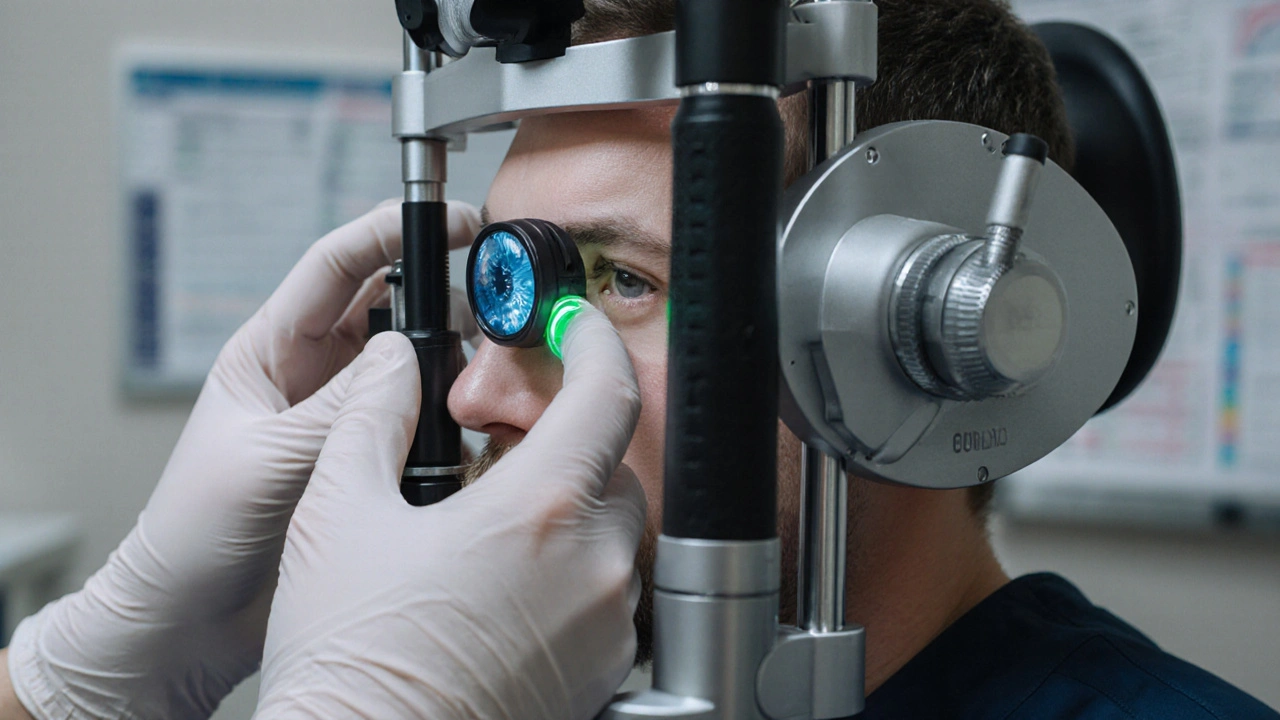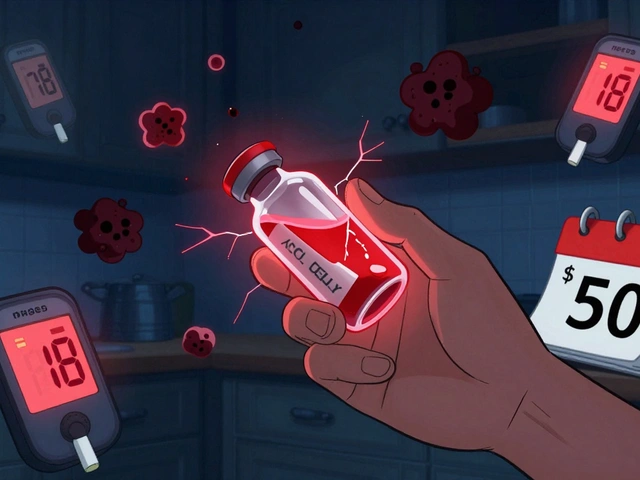Laser Trabeculoplasty: Overview & What to Expect
When talking about laser trabeculoplasty, a laser‑based procedure that improves fluid outflow from the eye to lower pressure. Also known as SLT or ALT, it’s a key tool in modern glaucoma, a group of eye diseases that damage the optic nerve usually because of high intraocular pressure. The goal is simple: reduce the pressure that threatens vision while avoiding daily eye‑drop routines. In the sections below you’ll see how the technique works, what equipment is used, and which patients benefit most.
How the Procedure Works and What Makes It Different
Laser trabeculoplasty targets the trabecular meshwork – the tiny drainage valve at the edge of the iris. By delivering precise laser bursts, the meshwork remodels, allowing aqueous humor to flow out more easily. This acts directly on intraocular pressure, the fluid pressure inside the eye measured in millimeters of mercury (mmHg). Lowering that pressure slows or stops damage to the optic nerve.
Two main laser types dominate the field. Selective laser trabeculoplasty (SLT), uses a low‑energy, 532‑nm frequency‑doubled Nd:YAG laser that selectively treats pigmented cells without harming surrounding tissue. Because it spares non‑pigmented cells, SLT can be repeated safely if pressure creeps back up. The alternative, argon laser trabeculoplasty (ALT), employs a higher‑energy argon laser that causes more structural change in the meshwork. ALT often provides a stronger initial pressure drop but is usually a one‑time option.
Both procedures share a handful of steps: a dilating drop opens the pupil, a special contact lens sits on the eye, and the surgeon fires a series of laser spots across the 360‑degree angle. The session lasts 10‑15 minutes, and patients can drive home afterward. Post‑procedure, a short course of anti‑inflammatory drops helps minimize irritation.
Why does this matter? Because the laser trabeculoplasty approach gives doctors a middle ground between daily eye‑drops and invasive surgery. If medication alone isn’t cutting pressure, or if side‑effects become a problem, a quick laser session can bridge the gap. For many, it postpones the need for tube shunts or micro‑invasive glaucoma surgery (MIGS).
When to Consider Laser Trabeculoplasty
Not every glaucoma patient is a candidate. Ideal scenarios include: early‑to‑moderate open‑angle glaucoma where pressure is stubborn, patients who struggle with adherence to drops, or those who have developed ocular surface disease from chronic medication use. Angle‑closure glaucoma, active inflammation, or prior laser scars usually rule out the procedure.
Studies show SLT can lower pressure by an average of 20‑30% after a single treatment, and the effect lasts 3‑5 years for many. ALT may achieve a 30‑40% drop but tends to wane after 2‑3 years. Because SLT can be safely repeated, many clinicians prefer it as the first laser option.
Cost is another practical factor. In most health systems, laser trabeculoplasty is covered under standard eye‑care benefits, making it a financially sensible alternative to lifelong drug purchases. The one‑time nature also reduces the hassle of refills and pharmacy trips.
Potential Risks and What to Watch For
All medical interventions carry some risk. The most common after‑effects are mild eye redness, a short‑lasting spike in pressure (usually handled with a quick eye‑drop), and occasional mild inflammation. Serious complications – like permanent vision loss or severe intra‑ocular pressure spikes – are rare (<1%). Proper pre‑procedure screening and post‑procedure monitoring keep these risks minimal.
If you experience persistent pain, sudden vision loss, or a persistent increase in pressure beyond a few days, you should contact your eye doctor immediately. Early detection of any issue helps preserve vision.
Putting It All Together
Laser trabeculoplasty sits at the intersection of glaucoma treatment, strategies to protect optic nerve health and maintain visual function. It requires a skilled ophthalmologist, a laser device (either SLT or ALT), and a patient willing to follow a brief after‑care routine. The procedure directly tackles the root cause – high intraocular pressure – and can either replace or supplement daily eye‑drops.
In the list that follows you’ll find articles that dive deeper into buying cheap generic medications, comparing eye‑related drugs, and understanding related conditions. Whether you’re looking for cost‑effective ways to manage your prescription or want a clearer picture of eye‑health topics, the collection gives you practical, easy‑to‑follow guidance.
Ready to explore the detailed guides? Below you’ll discover a range of resources that connect to laser trabeculoplasty, from medication buying tips to broader eye‑health insights, helping you make informed choices about your vision care.
Explore how laser treatments like SLT and ALT lower eye pressure, who qualifies, what to expect during the procedure, and how they compare to eye‑drop therapies.
View Details

